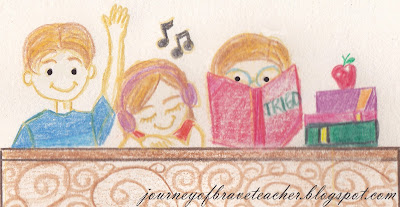Teaching in one method or strategy is like producing products using one pattern or mold. But learners are not just products; they are humans with different needs and sensitivities. If we really want them to be engaged with our subject matter, then we need to think of different strategies that can captivate their interest as learners with different personalities.
Understanding the different learning styles of our students by conducting an inventory of their interests and preferences (e.g., The Kolb Learning Style Inventory) can help us determine the different strategies that we can implement to promote learning engagement among our students. Personally, I see the importance of knowing one’s learning style with my own learning experiences. When I was in my elementary and high school years, I had tried every technique to increase my focus and concentration and be able to absorb more of our learning materials – studying with a group, creating rhymes and mnemonics, drawing diagrams and even listening to my own recorded recital. Until I encountered an online inventory test to know my own learning style preference and found out that I am more of a visual learner. (In searching the net for a similar online test in identifying our own learning style, I have found this site, which will ask you to answer 16 questions to find out if you are a visual, auditory or kinesthetic learner.)
Since then, I have increased my focus and concentration with my studies. Currently, in taking up my graduate studies, I am enjoying the benefits of knowing my own learning style. Most of the time our professors give us a lot of reading assignments. So to avoid information overload and absorb the gist of every chapter or book I have read, I make sure to draw a mind map about the important key points. In this way, I can easily review what I have read, and it makes me feel more confident that I have captured the substance of the whole text.
Identifying the learning styles of our students has a great impact to teaching. We should not plunge into teaching immediately; analysis of the learners should be done first. That is if we want to capture the interest of most of our learners. As I have stated previously, facilitating an inventory for the learners’ preferences and interests can help us determine the teaching strategies and techniques we can apply to match the different learning styles of the students. Hence, helping our students find their own learning style will not only help them achieve and met their learning goals, but also it could transform them to become lifelong learners. Since they are enjoying the learning experience, they will not hesitate to go beyond the subject we are teaching them, they will even become inspired to explore more about it.
In my own experience as a classroom and laboratory teacher, I usually include Multiple Intelligences of Howard Garner in my lesson planning. I see to it that somehow I could capture the interest of my students who are words, numbers and pictures smart. I would also facilitate some role playing and dramatizations to cater the needs of those who are people smart and assigned reflective journal for those who are self smart. And a lot of tools and strategies can be utilized to match with the different learning styles and multiple intelligences of our students. The effect is indeed tremendous. Students become more engaged with their learning. Since they know how they can learn best, they score better on exams and tests. Stress and frustration are lessened since they enjoy the way that they are learning.




No comments:
Post a Comment